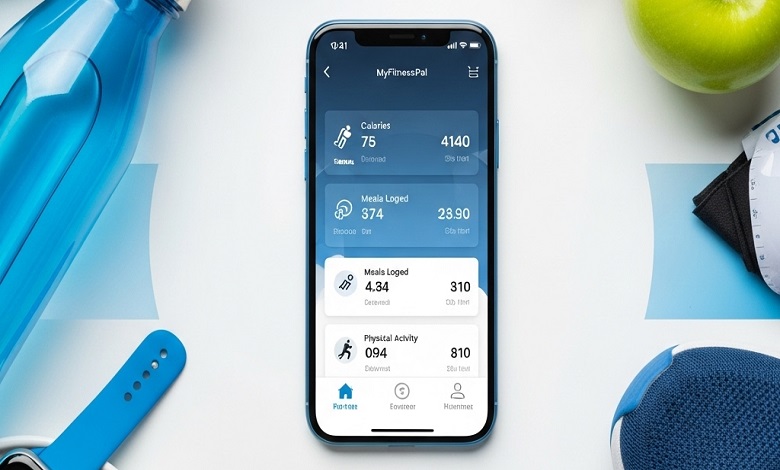MyFitnessPal Review: Is It Still the Best Fitness & Nutrition Tracker in 2025?

In today’s digital-first health world, fitness apps have become our personal trainers, dietitians, and accountability partners. Among the countless apps available, MyFitnessPal (MFP) has remained a leader for over a decade. But with newer competitors like Lose It! and Noom, is MyFitnessPal still the go-to app in 2025? Let’s dive into a detailed review and comparison.
🌟 Why MyFitnessPal Remains Popular
MyFitnessPal isn’t just another calorie tracker—it’s an all-in-one platform that helps users monitor nutrition, exercise, and lifestyle habits. Here’s why it stands out:
- Extensive Food Database 🍎: With over 14 million food items, including restaurant menus, MFP makes logging meals effortless.
- Barcode Scanner 📷: Scan packaged foods for instant tracking.
- Cross-Platform Sync 🔄: Works with wearables like Fitbit, Garmin, and Apple Watch.
- Community Support 👥: A built-in community forum where users share tips, recipes, and motivation.
This combination of accuracy, convenience, and social support has kept MFP relevant in a crowded fitness app market.
⚖️ MyFitnessPal vs. Competitors
To understand its place in 2025, let’s compare it to rivals:
- Lose It! 🎯: Simplified interface, great for beginners, but smaller food database.
- Noom 🧠: Focuses on psychology and habit-building, but requires more commitment and higher subscription costs.
- Cronometer 🥦: Popular among biohackers for detailed micronutrient tracking, though less user-friendly for casual dieters.
Compared to these, MyFitnessPal strikes the perfect balance between usability and depth, making it suitable for both casual users and serious fitness enthusiasts.
🥗 Nutrition Tracking Made Simple
One of MFP’s biggest strengths is its nutrition-first approach. It’s not just about calories—it provides a breakdown of:
- Macronutrients (protein, carbs, fats)
- Micronutrients (vitamins and minerals, depending on subscription tier)
- Personalized daily goals based on weight, height, and activity level
Users can also set special diet preferences, whether keto, plant-based, or gluten-free. For those looking to manage weight effectively, the app makes nutrition tracking fast, intuitive, and reliable.
🏋️ Fitness Integration & Activity Tracking
While MyFitnessPal isn’t a full workout app, it integrates seamlessly with popular platforms:
- Syncs steps from Apple Health, Fitbit, and Garmin
- Imports workouts from apps like Strava or MapMyRun
- Lets users log strength training and cardio manually
This makes MFP less about training plans and more about tracking energy balance—helping users see how workouts and meals align with their goals.
💰 Free vs. Premium Subscription
MyFitnessPal offers two options:
- Free Plan 🆓: Includes calorie tracking, basic macros, food logging, and exercise tracking.
- Premium Plan 💳 (~$19.99/month or discounted annually): Unlocks advanced features like:
- Detailed nutrient insights
- Custom meal plans
- Food analysis reports
- Recipe import and meal prep tools
- Ad-free experience
For casual users, the free plan is enough. But serious athletes, nutrition enthusiasts, or anyone on a specific diet plan may find Premium worth the investment.
🌱 Trend Factor: Health Meets Tech
In 2025, health and fitness aren’t just trends—they’re lifestyle essentials. Apps like MyFitnessPal have evolved to meet consumer expectations, such as:
- AI-Powered Recommendations 🤖: Personalized suggestions based on logged data.
- Sustainability Insights 🌍: Some apps now highlight carbon footprints of food choices.
- Community Challenges 🏆: Users join global fitness challenges to stay motivated.
By tapping into these innovations, MyFitnessPal keeps its edge while appealing to both health-conscious individuals and tech-savvy users.
✅ Pros & ❌ Cons of MyFitnessPal
Pros:
- Huge food database with global entries
- Easy meal logging with barcode scanner
- Free version is functional and reliable
- Integrates with most wearables and fitness apps
- Community-driven motivation and support
Cons:
- Premium subscription can feel pricey
- Occasional database inaccuracies (user-generated entries)
- Less advanced workout guidance compared to dedicated fitness apps
🔮 Future of MyFitnessPal
Looking ahead, expect MyFitnessPal to expand into personalized AI coaching, deeper integration with smart kitchen devices, and partnerships with meal delivery services for seamless health management. Imagine logging your dinner automatically when you order from a partnered healthy food subscription!
This direction shows how MyFitnessPal is more than a calorie counter—it’s evolving into a central hub for digital wellness.
🏆 Final Verdict: Should You Use MyFitnessPal in 2025?
If your primary goal is nutrition and calorie tracking, MyFitnessPal remains one of the best fitness apps on the market. It offers the perfect mix of ease of use, powerful tracking, and community support, making it suitable for both beginners and advanced users.
For casual tracking, the free version works well. But if you want deeper insights, diet customization, and ad-free experience, investing in MyFitnessPal Premium is worth it.
In short: Whether you’re starting your fitness journey, maintaining progress, or chasing new goals, MyFitnessPal is still a reliable companion for healthier living in 2025.




